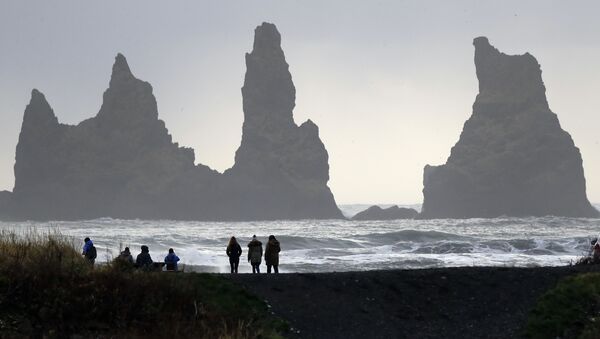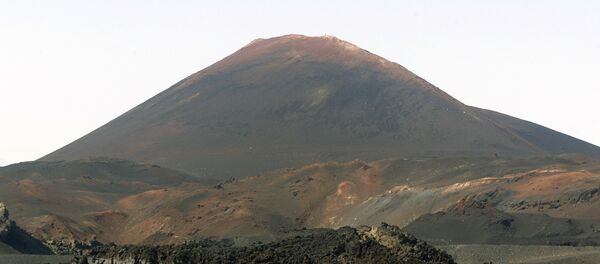In 2016, nearly 1.8 million tourists visited the diminutive island nation of just 330,000 inhabitants, which marks a 40 percent increase compared to 2015, according to recent figures from the Icelandic Tourism Board. Remarkably, the largest growth was recorded in December, which is by far the coldest and the darkest time of the year in Scandinavia. During the extended Christmas period, Iceland welcomed 76 percent more tourists compared with the previous year.
At present, Iceland has an unemployment rate of about 2 percent and an annual growth rate of 4 percent, with tourism having become the island nation's biggest industry, overtaking fisheries.
In guidebooks, Iceland is being marketed primarily for its pristine nature. Hundreds of thousands of tourists are drawn to its glaciers, lagoons, bleak frozen-lava-landscapes, black sand beaches and geysers despite the lack of sunlight, strong winds and notoriously unreliable Atlantic weather.
Ironically, the tourist boom itself was triggered by a natural calamity. In 2010, ash from the Eyjafjallajökull volcano disrupted air traffic across Europe, cancelling thousands of flights, and for many people this put Iceland on the world map. In 2016, the unbelievable football feats by the Icelandic national squad in the European Championship reinforced Icelanders' Viking heritage.
Another threat stemming from Iceland's storming success as a tourist destination is the formation of a new economic bubble, as it already happened in 2008, when Iceland's bloated banking sector lost its momentum and collapsed. In the following years, unemployment spiked to almost 12 percent, the country's stock market fell by 95 percent, whereas interest rates on loans rose by 300 percent. Many Icelanders had to sell their businesses, homes and cars.
"Instead of having these dramatic ups and downs, I would like to see a more balanced development," Þórólfur Matthíasson told Danish Radio, warning of the risk of a new crisis growing every day.
"People are buying and building more and more. But this firm faith in the inexhaustible well alone does not hold water. Someday it will dry out," Icelandic entrepreneur and horse breeder Diddi Bárðarson told Danish Radio, recollecting bitter experiences of his own from 1980s.
Never miss a story again — sign up to our Telegram channel and we'll keep you up to speed!




